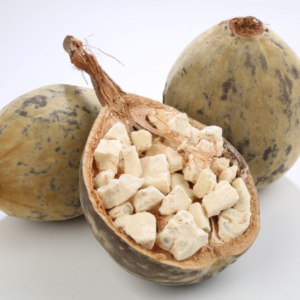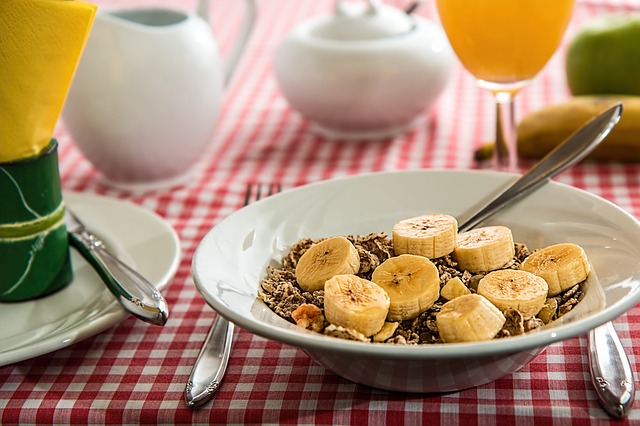Say what?
Introducing the Hadza diet! This is now the latest health-boosting weight-loss diet that people can`t stop talking about it.
What is Hadza diet?
It is so called Hadza diet which is according to the Stanford University, is based on the eating habits of the Hadza tribe in Tanzania, Africa. There`s a group of researchers who went to study this tribe and discovered how diverse the gut ecosystem of the Hadza compared to our Western culture.

The researchers/scientists realized that there are trillions of bacteria living in our guts which has surprising effect on our weight. It turns out that lean folks have special types of bacteria that trigger healthy cravings, reduce calorie absorption, boost metabolism and more!
The idea in Hadza diet is to have as much variety in our microbiome (bacteria in gut) as we possibly can in order to establish a healthy gut profile. This in turn will have a protective effect in our body. Dysbiosis (or imbalance of gut bacteria) has been associated with conditions like inflammatory bowel disease.
So these Hadza tribe apparently is a group of people, according to these researchers, who has the ABSOLUTE best gut bacteria that they have ever seen! It looks like they have a weight-loss boosting bacteria, and we have a fattening kind!
What is in the Hadza diet?
So, how did the Hadza people, who hunt and gather on the Serengeti Plains of Tanzania, end up with bacteria we should all want? In large part because they eat enough fruit, root veggies, and seeds to reach a stunning>>>>
100 GRAMS OF FIBER PER DAY!

Of course, 100 grams is not realistic for most of us – yet the Hadza findings help explain why more practical fiber-packed approaches work so well.
Fiber creates a more diverse and healthy gut flora. So many people do not have enough fiber in their diets since we`re having so much processed food. Realistically, we cannot reach the same amount of fibers as the Hazda tribe – we might be hospitalized with abdominal pain. Because the gut flora of a regular Western person is very different from them.
An average woman currently gets 9-11 grams of fiber daily, and some women can go as high as 40 grams right away. Some guidelines encourage us to aim for 25-30 grams per day. The key is replacing a lot of the low-fiber foods you eat – especially added sugar and processed carbs – with fiber-rich options.
So why do you think fiber helps boost these bacteria to loose weight?
The fiber, which is any type of roughage from plants that our bodies cannot break down, acts as food for bacteria that have slimming benefits. By contrast, those fatty meats and processed carbs feed bacteria that spur weight gain. The more fiber you eat, the more good bacteria multiply and diversify, and the more benefits you will see.
Also, you probably already know that fiber helps fill our bellies for zero calories, so we eat less without even trying.
Another thing, fiber basically gets in the way as our bodies try to digest other food, sort of slowing down the whole process. This prevents blood sugar spikes and helps keep you feeling full a long time.
Another benefit of fiber is it also prevents some calories from being absorbed. So, by making the digestive system work harder, fiber boosts metabolism.
What do you eat in Hazda diet?
You can have varieties of fibers. There`s insoluble fiber in nuts, seeds, grains and the skins on fruits and vegetables. There is also the soluble fiber in oats, lentils, chickpeas, kidney beans and fruit flesh.
You can also try those resistant starch in food such as just-ripe bananas, rice, or potato that has been cooked then cooled.
You can also have prebiotic foods which act like fertilizer for probiotics or good gut bacteria. Great sources are artichoke, leek, onion, and fennel. You can also try supplements of the prebiotic fiber.

Try to eat Baobab or take it as a supplement. It is Hadza`s staple food which is a great source of fiber. You can find these in a powder form in some health food store. Aside from fiber, Baobab is packed with calcium, vitamin C, potassium, magnesium and zinc.
It is also well recommended that if you follow the Hadza diet, you should eat seasonally. According to the researchers, the Hadza`s diet vary with the season – so, there are corresponding changes in their gut health flora. I think it really makes sense to eat fruits and vegetables in season, because they are in their prime. So, you are really getting good quality rather than foods that have been stored for months in the refrigerators or processing places. It will also be easier on your digestion. Not to mention, that tweaking your diet every few months constantly introduces more food variety.
Are you ready to try the Hadza diet?
There are so many rich-in-fiber recipes out there but be sure when you are on this diet to sip at least one liter of water for every 10 grams of fiber consumed, since too much fiber and too little fluid can cause severe constipation. It is also recommended that some women need to slowly increase fiber intake by 5 grams or so every few days to avoid tummy discomfort. Just try to experiment to see what works for your body. You can also add any healthy beverages or extras you like, such as coffee, tea, herbs and spices. But of course always get a doctor`s okay to try any new plan.
My final thoughts about Hadza diet?
I know for sure that fiber has really a lot to offer in terms of our health. It helps us prevent heart disease, fiber keeps our blood sugar steady, and it even prevents colon cancer. But it is really good to know that according to the Hadza diet, fiber can totally helps transform your gut bacteria into super fat-burners! Which really sounds great!
As you boost your gut bacteria, it is easier to loose weight and at the same time make our body more healthy.
My Fiber Supplements Recommendations:
Nature’s Bounty Fibre with Vitamin D3
I hope this article about Hadza diet is helpful for you. If you have any thoughts about this article, feel free to leave a comment:)





Wow, this was so interesting! I find the microbiome fascinating and this Hadza diet sounds exactly like what I’ve been looking for. I eat a lot of fiber but it still doesn’t feel like it’s enough. Is Baobab fruit easy to access? I might use the powder form you suggested. I’m definitely ready to try this diet! Thanks for sharing, that’s awesome.
Hi CJ, thanks for leaving a comment.
Baobab is a staple food of the people in Tanzania. The fruit itself is hard to find if you are not living in Africa. But the good thing, you can get hold of in powder form. Aside from your local health food store, you can get Baobab as a powder form in AMAZON.
All the best!
Hi, I have never heard of the hadza diet but it does sound very interesting. I like that it recommends more fiber, because like you say, we do not get enough of it and it is so important to eat fibers for your gut. I have heard of Baobab before but I never knew of all the good vitamins etc that are found in it. I do wonder about your stomach tho, since having a lot of fiber can make your bowl movements pretty rough. Is there anything that would help with this? Or will this not happen when on the Hadza diet?
Hi Alexandra, thanks for your comment.
I have mentioned in the article that when you are taking fiber:
“one liter of water for every 10 grams of fiber consumed, since too much fiber and too little fluid can cause severe constipation”
Lots and lots of water if you can:)
All the best!
I always find interesting reading articles that have to do with food and diet as I always find something new that I didn’t know about. Personally I try to eat food that are rich in fibers as I need them very much and it’s good for digestion but I think in general our bodies need a certain amount of fibers that is critical for our health. I had never heard of this Hadza diet before, thank you for the info you provide us.
Thank you Stratos for sharing your thoughts.
All the best!
I remember my granny telling me that our gut is the second brain in our body. I was too young to understand what she meant-I must admit I laughed when she first said it to me.
Now, I can understand the meaning of her words!!!
A rich-in-fibre diet, like the one you present with your article, will help us not only burn more calories and achieve and maintain optimal weight but it will improve our overall health and wellness by avoiding issues that obesity brings along. Especially during menopause or post-menopause when our body tends to store abdominal fat! The risk of diabetes and cardiovascular disease gets higher this period, doesn’t it?
Switching to non-processed and seasonal foods will enhance our gut and consequently our body’s health. I’m glad prebiotics are allowed! I can’t live without yogurt!
Hi Effie, thank you for sharing your thoughts with regards to this article.
I guess now, people are starting to learn that the truth is “healthy gut, healthy body”
Basically, we should really know what we are putting in our mouth so that our gut will work properly.
All the best!
The Hadza diet just shows us how those who live as close to nature as possible stay healthy without so much effort to make it work. If we are able to get ut to 40 grams of fibre then we have really tried. I think I’ll need to research and see if my next vacation can tske me to Tanzania. The article was very enlightening. Thanks
Hi Idara, you are definitely correct in that – live as close to nature.
These tribes, like the Hadza, will definitely teach us lessons with regards to our health.
All the best!
Thank you for this post. I’m very much into healthy eating and being vegetarian always try to include as much fiber as possible. How interesting to read about the Hazda tribe. Yes, 100 gm of fiber a day would be impossible for most people used to a diet high in processed foods.
Hi Kathy, thanks for your comment.
I am glad that Hadza tribe was able to preserve their culture and uniqueness in terms on what food they eat- but of course with the help of the government of Tanzania. We really can learn from these people who are close to nature.
All the best!
Hi Hanna,
What a fascinating diet plan. When we lived in Zimbabwe, we regularly ate the fruit of the Baobab tree which I loved. We would stop on our frequent road trips when we saw a Baobab tree growing near the road and pick up the fruit. It was great to suck the powder off the pits.
Good to see this is now available in the health stores.
Hi Jill, thanks for your comment.
Wow, that`s amazing to know that you can get hold of the Baobab fruit that easy! I myself have not tasted the Baobab fruit,( I live in the northern part of the world), but tasted only the powder form. Hopefully one of these days.
All the best!
Hi Hanna
Thanks for an interesting article. My lifestyle is all about health and fitness so I always enjoy reading about new diets and health related issues. I’m not sure if the Hadza diet is right for me, I eat plenty of fruit and vegetables, but is there any lean chicken, fish or pork n this diet?
Regards
Steve
Thanks Steve for sharing your thoughts about this article.
I believe that eating meat can be a part of the Hadza diet. Hadza people are hunter-gatherer. They eat berries and meat of animals they hunt.(READ more here about Hadza people).
All the best!
This is great. I want to try this. I need to increase my fiber because I noticed lately that i’m only eating about 10 grams a day, if that. I actually had ibs until I cut back the amount of carbs and sugar I was eating and it made a huge difference in my gut. Thanks for sharing this. I want to look more into it because it sounds very interesting.
Hi Jen, thank you for your comment.
It sure will make a difference if you are eating more fiber. Also, for older people, having fiber in their meals will be beneficial.
All the best!
I loved this post. I couldn’t agree more about eating seasonal fruit and veg. It grows at a certain time of year for a reason. I will definitely look into Baobab sounds interesting.
Hi Deb, thank you for reading this article and leaving a comment.
All the best!